Motion
|
Recommended Testing
Position
|
Stabilization
|
Center
|
Proximal Arm
|
Distal Arm
|
Start
|
End
|
Flexion
|
Sitting, with
thoracic & lumbar spine well supported by the back of
the chair. Tongue depressor can be held between teeth for
reference |
Shoulder
girdle is stabilized to prevent flexion of thoracic &
lumbar spine |
Over the
external auditory meatus |
Perpendicular
or parallel to ground |
With base of
nares or parallel to longitudinal axis of tongue
depressor |
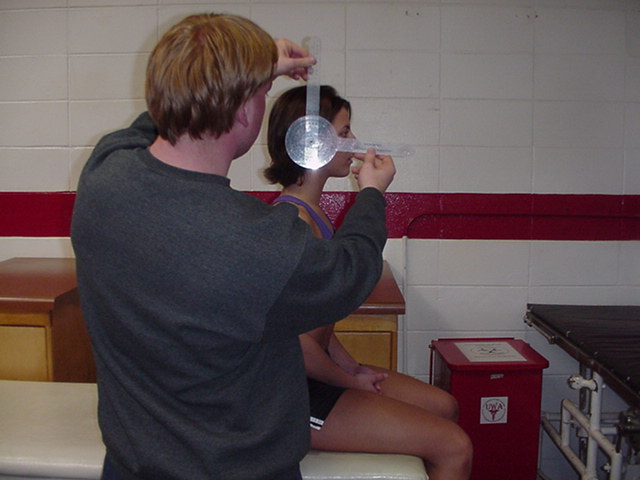 |
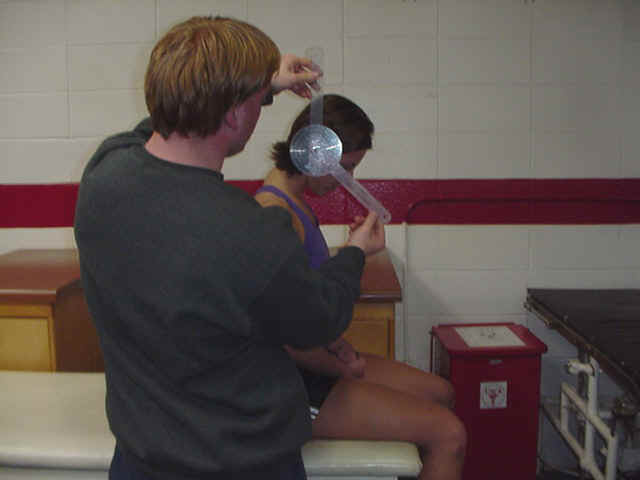 |
Extension
|
Sitting, with
thoracic & lumbar spine well supported by the back of
the chair. Tongue depressor can be held between teeth for
reference |
Shoulder
girdle is stabilized to prevent flexion of thoracic &
lumbar spine |
Over the
external auditory meatus |
Perpendicular
or parallel to ground |
With base of
nares or parallel to longitudinal axis of tongue
depressor |
 |
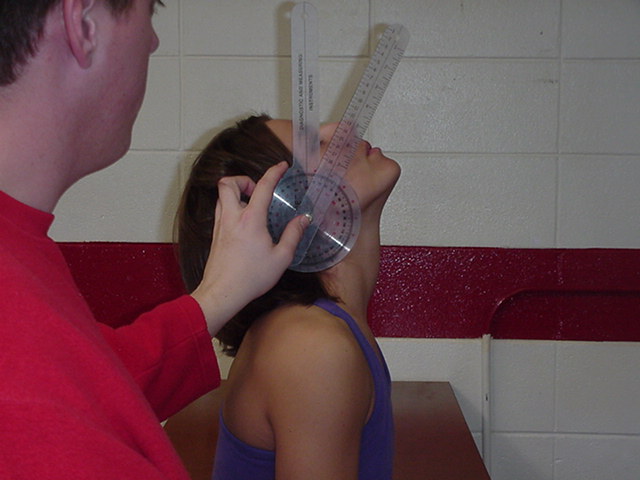 |
Lateral
flexion
|
Sitting, with
thoracic & lumbar spine well supported by the back of
the chair. Cervical spine in 00 of flex, ext,
& rot. Tongue depressor can be held between teeth for
reference. |
Shoulder
girdle is stabilized to prevent lateral flexion of
thoracic & lumbar spine |
Over spinous
process of C7 |
Spinous
processes of thoracic vertebrae so that arm is
perpendicular to ground |
Dorsal
midline of head. Reference occipital protuberance. |
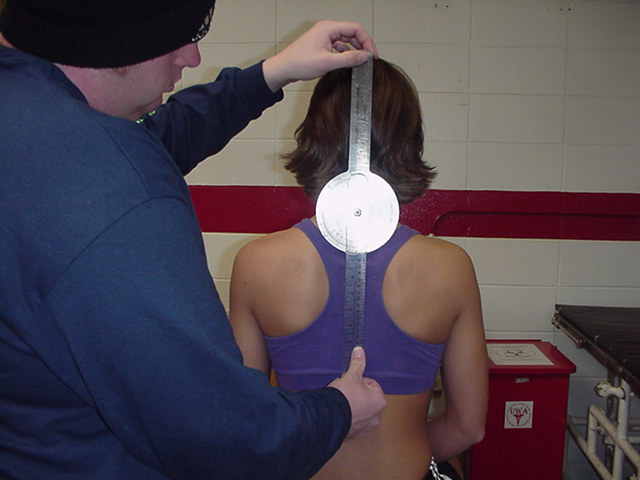 |
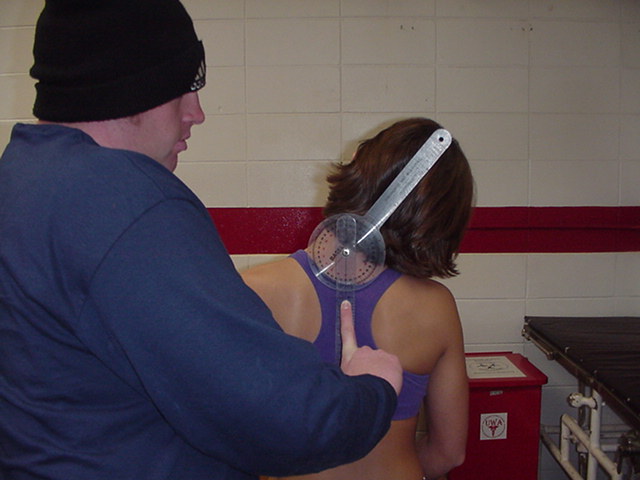 |
Rotation
|
Sitting, with
thoracic & lumbar spine well supported by the back of
the chair. Cervical spine in 00 of flex, ext,
& lat flex. Tongue depressor can be held between
teeth for reference. |
Shoulder
girdle is stabilized to prevent rotation of thoracic
& lumbar spine. |
Over center of
cranial aspect of head |
Parallel to
imaginary line between the two acromial processes |
With the tip
of the nose. If using tongue depressor, parallel to
longitudinal axis of tongue depressor |
 |
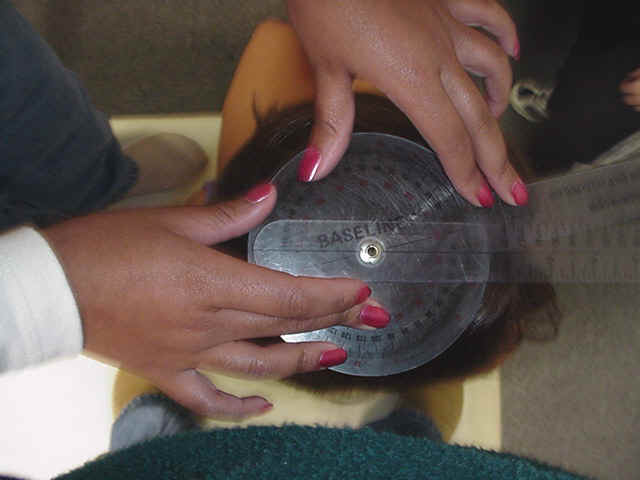 |
Flexion
|
Standing with
cervical, thoracic, & lumbar pine in 00 of
lateral flexion & rotation |
Stabilize
pelvis to prevent anterior tilting |
Measure
distance between spinous processes of C7 & S1 with
tape measure |
Start in
upright zero starting position |
End with
measurement at end of ROM |
|
|
Extension
|
Standing with
cervical, thoracic, & lumbar pine in 00 of
lateral flexion & rotation |
Stabilize
pelvis to prevent anterior tilting |
Measure
distance between spinous processes of C7 & S1 with
tape measure |
Start in
upright zero starting position |
End with
measurement at end of ROM with patient putting hand on
buttocks & bending backwards |
|
|
Lateral
flexion
|
Standing with
cervical, thoracic, & lumbar pine in 00 of
flexion, extension & rotation |
Stabilize
pelvis to prevent lateral tilting |
Over posterior
aspect of S1 spinous process |
Perpendicular
to ground |
Posterior
aspect of C7 spinous process |
|
|
Rotation
|
Sitting, with
feet on floor to help stabilize pelvis. Cervical,
thoracic, & lumbar pine in 00 of flexion,
extension & lateral flexion |
Stabilize
pelvis to prevent rotation. Avoid flexion, extension,
& lateral flexion of spine |
Over center of
cranial aspect of head |
Parallel to an
imaginary line between the two prominent tubercles on the
iliac crests |
With
imaginary line between the two acromial processes |
|
|